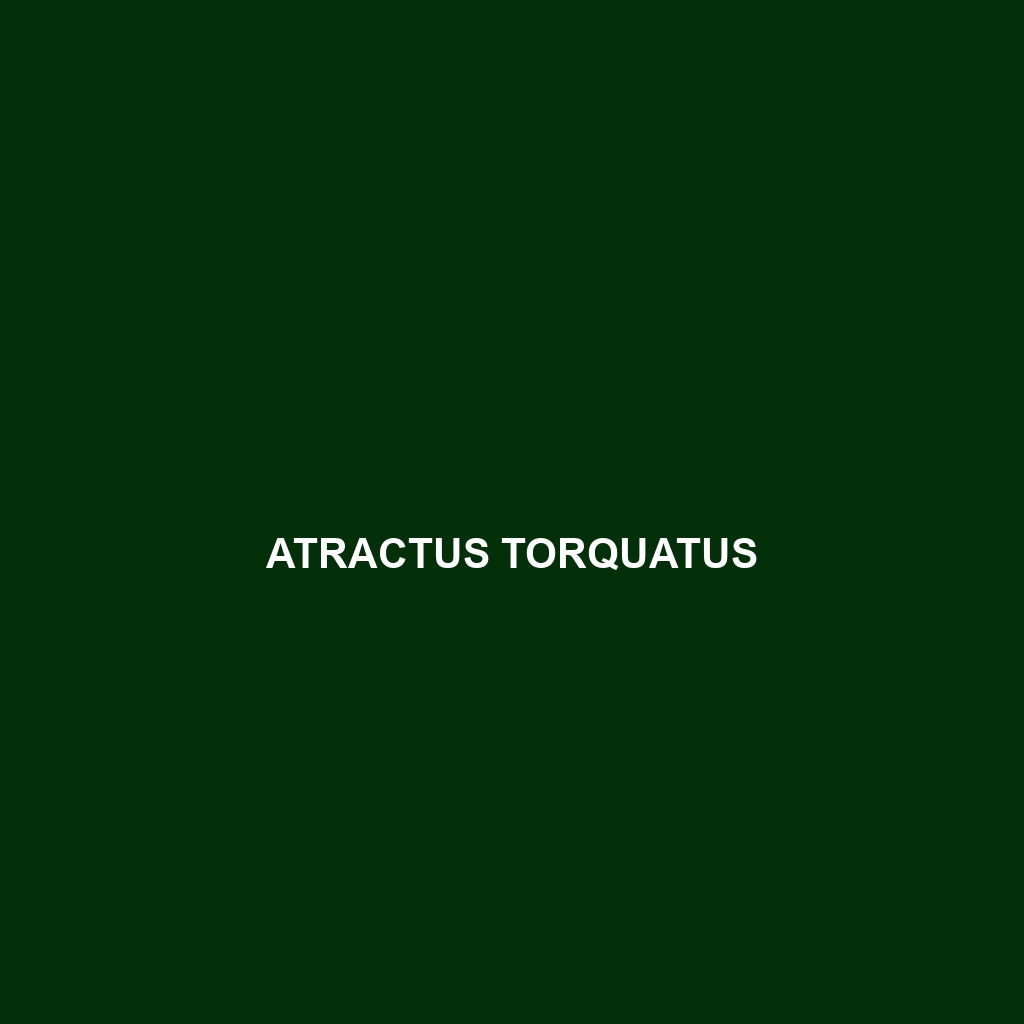Discover the fascinating Atractus zidoki, a slender, medium-sized snake native to the tropical rainforests of Colombia, characterized by its striking dark patterns and elusive, nocturnal behavior. This carnivorous species plays a vital role in regulating invertebrate populations and is currently classified as Vulnerable due to habitat threats.
Tag: reptile conservation
Atractus tartarus
<p>The <b>Atractus tartarus</b>, or tar tar snake, is a nocturnal, fossorial species native to tropical rainforests in South America, characterized by its striking dark brown to black coloration with lighter patterns. Measuring 40 to 60 centimeters, it primarily feeds on small invertebrates and plays a crucial role in maintaining ecological balance within its habitat.</p>
Atractus punctiventris
Discover the Atractus punctiventris, or punctuated snake, a slender, nocturnal species found in the tropical rainforests of Central and South America. Adapting to its humid environment, it features a dark base color with lighter spots, and plays a crucial role in controlling invertebrate populations while facing threats from habitat loss.
Atractus nigriventris
Discover the Atractus nigriventris, or black-bellied snake, a nocturnal species found in the tropical rainforests of Colombia and Ecuador. With its sleek dark body, flexible jaw structure, and diet of small invertebrates, it plays a vital role in maintaining the ecosystem's balance.
Atractus nicefori
Discover the Atractus nicefori, a vulnerable snake species native to the humid forests of Colombia, characterized by its striking dark brown and black coloration and elongated body. This nocturnal, fossorial predator plays a vital role in its ecosystem by regulating invertebrate populations through its diet, primarily consisting of earthworms and slugs.
Atractus modestus
Discover the fascinating Atractus modestus, a slender, nocturnal snake found in the humid forests of Central and South America, recognized for its smooth scales, distinctive brown and black coloration, and diet primarily consisting of small invertebrates like earthworms and insects. With a reproductive habit of giving birth to live young, this elusive species plays a crucial role in its ecosystem, helping to regulate invertebrate populations.
Atractus micheleae
<p><b>Atractus micheleae</b>, also known as Michelle's snail-eater, is a slender, nocturnal snake found in the humid tropical forests of Central America, particularly Costa Rica and Panama. It reaches lengths of 60 to 80 cm, preys primarily on small invertebrates, and plays a crucial role in its ecosystem by maintaining ecological balance.</p>
Atractus michaelsabini
<b>Atractus michaelsabini</b> is a striking snake native to the humid tropical forests of Colombia and Ecuador, known for its unique dark brown and yellow banding. This secretive, ovoviviparous species plays a vital role in its ecosystem by preying on small invertebrates and amphibians while facing threats from habitat loss, currently listed as 'Vulnerable' on the IUCN Red List.
Atractus hoogmoedi
<p>The <b>Atractus hoogmoedi</b>, commonly found in the rainforests of Colombia and Ecuador, is a small, nocturnal snake known for its distinct brown coloration and dark banding. This vulnerable species plays a crucial role in the ecosystem by controlling invertebrate populations and serves as a vital food source for larger predators.</p>









